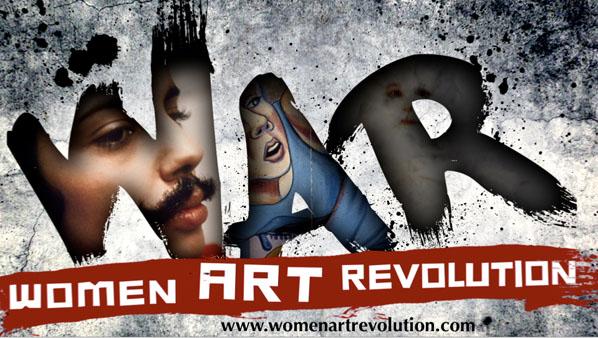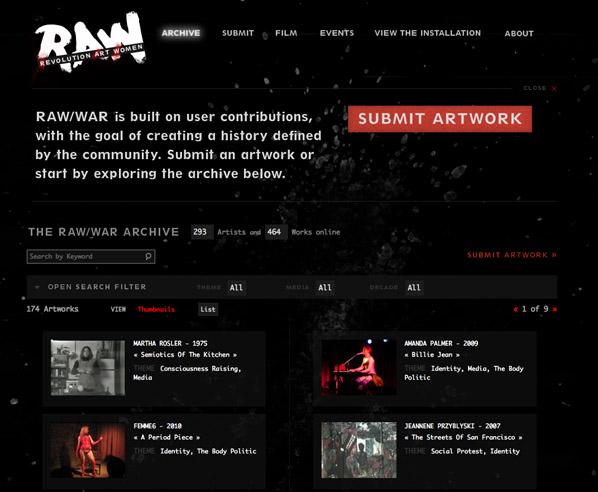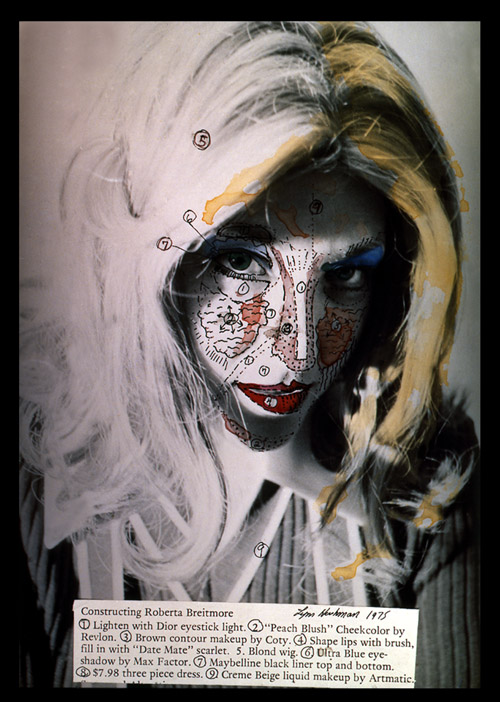



Featured image: Lynn Hershman Leeson Portrait (Photo Credit: Ethan Kaplan)
Woman, Art & Technology is a new series of interviews on Furtherfield. Over the next year Rachel Beth Egenhoefer will interview artists, designers, theorists, curators, and others; to explore different perspectives on the current voice of woman working in art and technology. I am honored to begin this series with an interview with Lynn Hershman Leeson, a true pioneer in the field who has recently produced !Women Art Revolution- A Secret History.
Over the last three decades, artist and filmmaker Lynn Hershman Leeson has been internationally acclaimed for her pioneering use of new technologies and her investigations of issues that are now recognized as key to the working of our society: identity in a time of consumerism, privacy in a era of surveillance, interfacing of humans and machines, and the relationship between real and virtual worlds. She has been honored by numerous prestigious awards including the 2010-2011 d.velop digital art and 2009 SIGGRAPH Lifetime Achievement Awards. Hershman also recently received the 2009 John Simon Guggenheim Memorial Foundation Fellowship, an award which supported her latest documentary film !Women Art Revolution – A Secret History.

Rachel Beth Egenhoefer: Your most recent project is the film “!Women Art Revolution” which you have been collecting materials for and working on for the past forty years. Why is now the time to present it as a finished work?
Lynn Hershman Leeson: TECHNOLOGY! The film is one narrative, but I’ve put the entire 12,428 minutes online through Stanford University Library, making all the narratives and aterials accessible, so in effect there are no out takes. Also the RAWWAR org archive/website allows people to continue the story online. So the story continues to grow beyond the single narrative, which technology allows us to do now.
Additionally, I wanted to push out into public view the graphic novel, curriculum guide, and the story to affect the legacy while women who created the movement could be appreciated.
RBE: Can you expand on how you see the RAWWAR story continuing online? Or maybe what is the goal of the archive/website? Do you envision people adding to it?
LHL: Yes, it was made specifically so that people, especially younger generations will be able to add information. At the Walker Art Center, they have scanning stations and are training people how to upload work onto the site. My hope is that people from around the world will add materials and it will be a living repository of this type of growing and accessible information.

RBE: The film has been touring in the U.S., what has the response been?
LHL: Incredible. It has been in over 60 cities, and standing ovations in San Francisco, Houston, Toronto, Sundance, Berlin and Mexico City. People seem deeply affected by this secret history and seem to appreciate knowing about it.
RBE: Has the response varied either with geography or current events?
LHL: Not really, it seems vibrantly appreciated worldwide despite it being about women in America.
RBE: Can you explain the grammar behind the title “!Women Art Revolution”?
LHL: If you mean why the ! first, it was so we would be listed first, rather than under W. It didn’t work, but that was why we did it originally. It also is a wild exclamation at the start, which is what the movement was.
RBE: The film is described as presenting the relationships between the Feminist Art Movement and the anti-war and civil rights movements, showing how historical events sparked feminist actions. Do you see any connections to be made with the current Occupy Movements?
LHL: Yes, absolutely. In some ways because it is about how the disempowered and invisible people were able to gain their place in culture; how people who had their voices silenced were able to amplify their message and subverted social systems, with work that expressed censorship, freedom of expression, social justice and civil rights and directly made political change. It is an inspiring story of reinvention.
The goals were clearer than with Occupy. But the disenfranchised edges of culture is similar.

RBE: A lot of your early works dealt with issues of identity. How do you think the notion of identity has changed over the years?
LHL: It has become more technological, more global, more cyborgian. We now, because of the internet are linked globally and that has resulted in a “hive mind” and in turn, that seems to be a cohesion and holding together the individual fracturing that had occurred over the last two decades
RBE: Can you expand on the idea of the “hive mind that seems to be holding together the individual fracturing”? What makes up the hive, what is fracturing us? Is this good or bad or neither?
LHL: The hive is social media and people who participate in the Internet grammar. There is a congealing through access to information. As individuals, I think we have been fracturing, rupturing, split for decades and have become multi faceted and multi taskers. But there’s a price in the lack of personal cohesion that results. I think that having a common reference or ‘hive’ is a very good thing, as it tests our idea of ‘reality’, and serves as a hub of communication.
RBE: Do we make our own hives? Or are those defined for us (either by others/ FaceBook/surveillance/ etc)?
LHL: We are all part of global re-patterning that is happening live on a global scale and it is naive to assume we can act independently or not be connected or affected. We are constantly challenged, influenced by peripheral and pervasive information and in turn we have become fodder for surveillance and digital integration.
RBE: Some contemporary artists and thinkers have been critical of our online selves and physical selves. Sherry Turkel for instance has described people as “performing themselves” online by constantly updating Facebook profiles, tweets, etc to show an ideal version of ourselves. Can you draw any distinctions between virtual, physical, and performative selves?
LHL: I think we perform ourselves every day, not only on social media, but in all interactions. I do not think all images or versions of ourselves are ideal. There is absolutely a difference between real/physical and virtual selves. They each have a context, reference and function. As far as being performative, that depends upon the distinction used for how it is used. One can, in fact, consider life itself and everything one does as performance.
RBE: This interview is going to be part of a series of interviews with women working in Art & Technology. What do you consider to be important today about being a woman working in art & technology?
LHL: Ada Lovelace wrote the first computer language, Mary Shelley envisioned artificial intelligence, Hedy Lamar invented spread spectrum technology, which led to cell phones. Women have been enormously prescient in visioning and affecting the future of the world through technological linkage systems.
RBE: Do you think it is still useful to discuss the female voice as a separate voice in the field?
LHL: I think the female voice is critical in all aspects of the future and should not be limited to a category.

RBE: One of your earlier works, LORNA, depicts a woman who never leaves her apartment and becomes more and more fearful as she watches ads and news on the TV. Some might say television media has gotten far worse since the 80s in both fear mongering and controlling conversations. What do you think about the current state of the media?
LHL: Right, the idea of media as totally affecting our outlook has shifted. Media is no longer omniscient! The 99% are activating their voices and warbling into existence. There are other problems with social media… deeper ones that splay into the cracks of fractured identities and insist on more disruption and lack of focus. But perhaps that is what is affecting our constantly changing evolution.
RBE: If LORNA were around today what would she be thinking or doing in her little 1 room apartment?
LHL: Blogging and all forms of social media including excessive and obsessive shopping, no doubt. She would probably not really be agorophobic either. She would, however, probably be paranoid. She would use a webcam and notice all the ones surrounding her no matter where she moved.
RBE: Do you have hope for change in the future?
LHL: Hope? It is inevitable. I believe in the next generation! They always, in their amnesiac optimism re invent the future in ways that can’t be predicted.
RBE: You have been involved in academia for some time, what do you think is important to be teaching in the Universities right now?
LHL: Independent thinking and creativity, the maintenance of ethics and a profound sense of humor!
RBE: Do you have any new projects you are working on?
LHL: Yes, at least 3 .A new film which is part 3 of my trilogy about the evolution of the human specis, a new installation that uses scanned beating heart cells, and a long term project about Tina Modotti.
Find our more on Lynn Hershman Leeson and Woman Art Revolution here: http://www.lynnhershman.com/http://womenartrevolution.com/